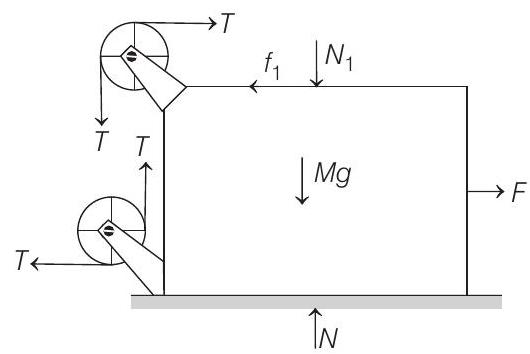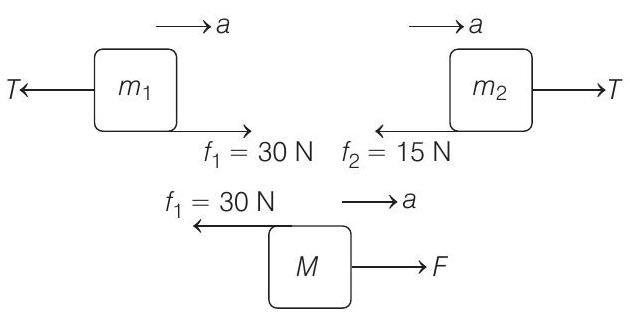Laws of Motion 3 Question 19
20. In the figure masses
The string is perfectly vertical between

(a) Draw a free body diagram of mass
(b) Let the magnitude of the force of friction between
Show Answer
Answer:
Correct Answer: 20. (b)
Solution:
- Given,
(a) Free body diagram of mass

(b) The maximum value of
The maximum value of
Forces on

Now, there are only two possibilities :
(1) Either both
(w.r.t. ground) or
(2) Both
First case is possible when
| or | |||
|---|---|---|---|
| and | or |
These conditions will be satisfied when
say
Therefore, the condition
Thus,
In the second case, when
Now, since
Free body diagrams and equations of motion are as follows

For
For
For
Solving these three equations, we get
NOTE
- Friction always opposes the relative motion between two surfaces in contact.
- Whenever there is relative motion between two surfaces in contact, always maximum friction (kinetic) acts, but if there is no relative motion then friction force (






